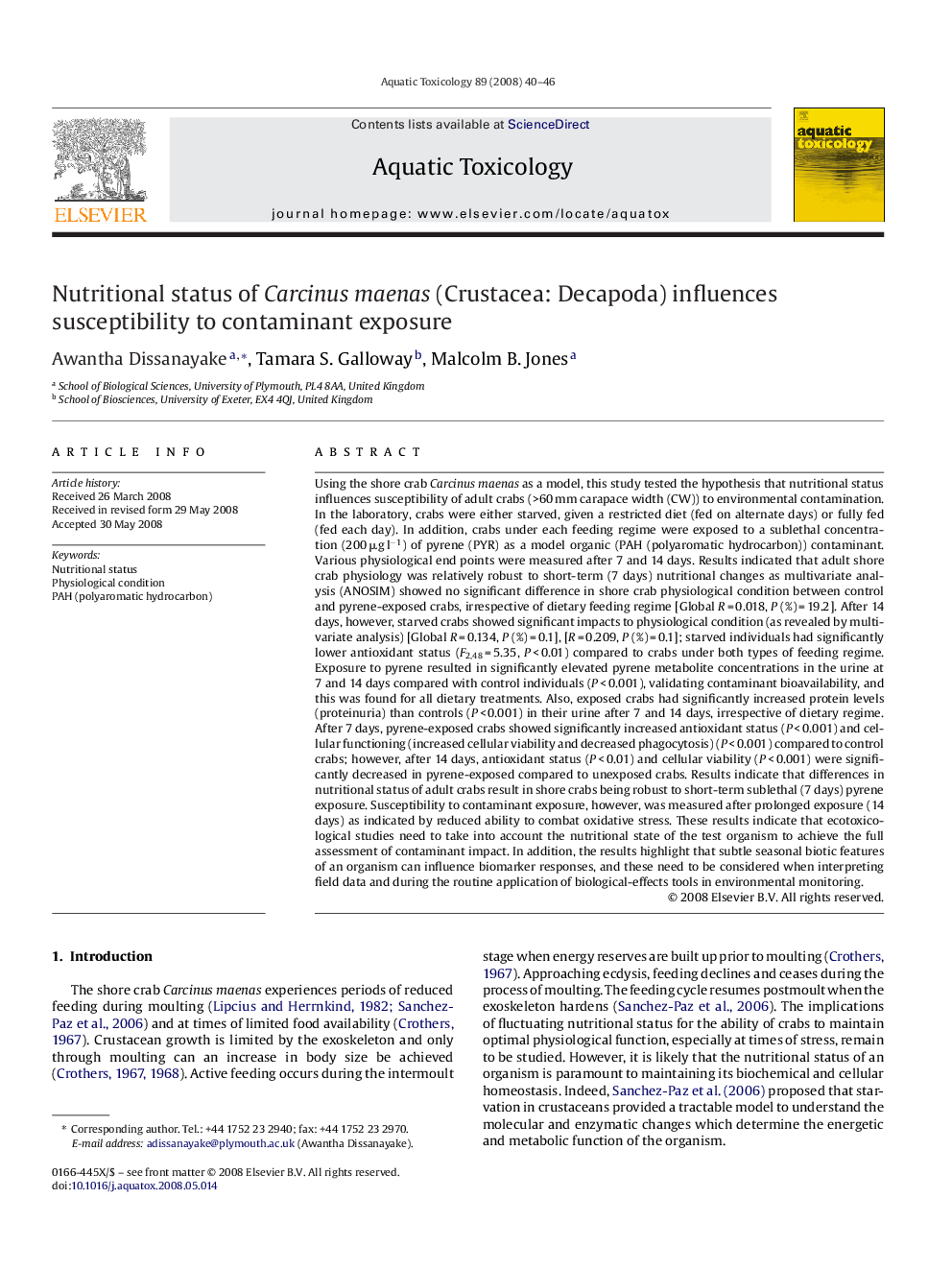| کد مقاله | کد نشریه | سال انتشار | مقاله انگلیسی | نسخه تمام متن |
|---|---|---|---|---|
| 4530787 | 1324729 | 2008 | 7 صفحه PDF | دانلود رایگان |

Using the shore crab Carcinus maenas as a model, this study tested the hypothesis that nutritional status influences susceptibility of adult crabs (>60 mm carapace width (CW)) to environmental contamination. In the laboratory, crabs were either starved, given a restricted diet (fed on alternate days) or fully fed (fed each day). In addition, crabs under each feeding regime were exposed to a sublethal concentration (200 μg l−1) of pyrene (PYR) as a model organic (PAH (polyaromatic hydrocarbon)) contaminant. Various physiological end points were measured after 7 and 14 days. Results indicated that adult shore crab physiology was relatively robust to short-term (7 days) nutritional changes as multivariate analysis (ANOSIM) showed no significant difference in shore crab physiological condition between control and pyrene-exposed crabs, irrespective of dietary feeding regime [Global R = 0.018, P (%) = 19.2]. After 14 days, however, starved crabs showed significant impacts to physiological condition (as revealed by multivariate analysis) [Global R = 0.134, P (%) = 0.1], [R = 0.209, P (%) = 0.1]; starved individuals had significantly lower antioxidant status (F2,48 = 5.35, P < 0.01) compared to crabs under both types of feeding regime. Exposure to pyrene resulted in significantly elevated pyrene metabolite concentrations in the urine at 7 and 14 days compared with control individuals (P < 0.001), validating contaminant bioavailability, and this was found for all dietary treatments. Also, exposed crabs had significantly increased protein levels (proteinuria) than controls (P < 0.001) in their urine after 7 and 14 days, irrespective of dietary regime. After 7 days, pyrene-exposed crabs showed significantly increased antioxidant status (P < 0.001) and cellular functioning (increased cellular viability and decreased phagocytosis) (P < 0.001) compared to control crabs; however, after 14 days, antioxidant status (P < 0.01) and cellular viability (P < 0.001) were significantly decreased in pyrene-exposed compared to unexposed crabs. Results indicate that differences in nutritional status of adult crabs result in shore crabs being robust to short-term sublethal (7 days) pyrene exposure. Susceptibility to contaminant exposure, however, was measured after prolonged exposure (14 days) as indicated by reduced ability to combat oxidative stress. These results indicate that ecotoxicological studies need to take into account the nutritional state of the test organism to achieve the full assessment of contaminant impact. In addition, the results highlight that subtle seasonal biotic features of an organism can influence biomarker responses, and these need to be considered when interpreting field data and during the routine application of biological-effects tools in environmental monitoring.
Journal: Aquatic Toxicology - Volume 89, Issue 1, 11 August 2008, Pages 40–46